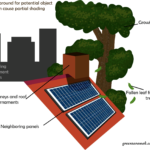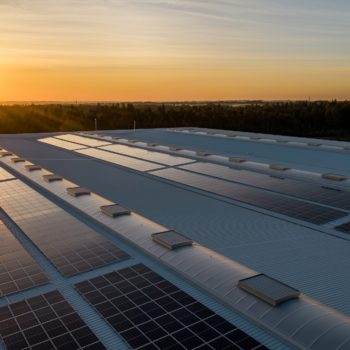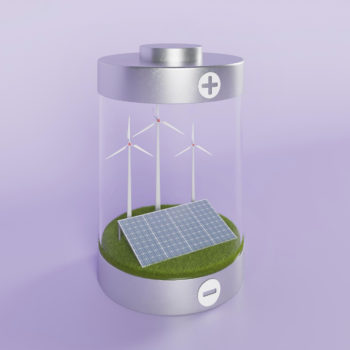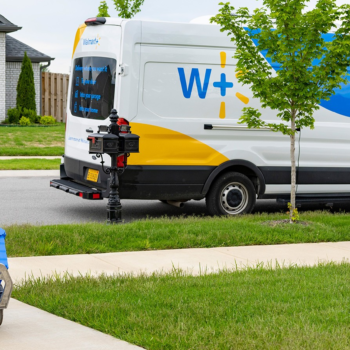|
|
Harnessing renewable energy sources and reducing our carbon footprint has become a pressing concern in our rapidly changing world. As the demand for sustainable solutions intensifies, a heated rivalry has emerged in the realm of energy storage.
In the red corner, we have the reigning champion, Tesla Powerwall, the household name that revolutionized the concept of home batteries.
And in the green corner, a formidable lineup of eco-friendly rivals is ready to challenge Tesla’s supremacy.
From sleek designs that seamlessly blend with your home’s aesthetics to cutting-edge technologies promising superior efficiency, these contenders aim to redefine the energy storage landscape.
But which option truly reigns supreme? Prepare to enter the ring as we delve into the showdown between Tesla Powerwall and its eco-friendly rivals, exploring their features, performance, and environmental impact.
Join us as we unlock the secrets behind this battle of batteries and discover the electrifying future of sustainable energy storage.
Tesla Powerwall – Overview
The Tesla Powerwall is the leading home battery storage system on the market.
It has a sleek design that can seamlessly integrate with your home’s aesthetics and is compatible with both solar and non-solar energy sources.
Tesla Powerwall‘s capacity ranges from 13.5 kWh to 14 kWh and has a power output of 7kW or 5kW, depending on the version. The battery can be controlled through the Tesla mobile app, which allows you to monitor energy production and consumption and set custom controls.
Compared to traditional generators and other battery storage options, Tesla Powerwall offers superior efficiency and reliability. The battery can power your home during outages, and it is designed to recharge using renewable energy sources.
Tesla Powerwall’s batteries are made from lithium-ion, which is more environmentally friendly and efficient than traditional lead-acid batteries.
However, Tesla Powerwall does have a few drawbacks, such as its high price tag and limited capacity.
It’s not the most robust solution for large-scale energy storage and is best suited to small households. Moreover, it has to be installed along with a solar panel, making it prohibitively expensive for many households.
Tesla Powerwall Eco-Friendly Alternatives
As Tesla Powerwall’s reign continues, its challengers are getting smarter and more efficient. Eco-friendly alternatives that offer competitive features at an affordable price have been emerging in the market.
LG Chem RESU
One of the strongest contenders against Tesla Powerwall is the LG Chem RESU (Residential Energy Storage Unit). The LG Chem RESU is a compact and versatile home battery storage system that is gaining popularity for its excellent performance and eco-friendly design.
The LG Chem RESU comes in different models with varying capacities, ranging from 3.3 kWh to 16 kWh, allowing homeowners to choose the size that suits their energy needs. It boasts a high power output, enabling it to meet the demands of heavy electricity usage during peak hours.
One of the notable advantages of the LG Chem RESU is its high round-trip efficiency, which means it can store and discharge energy with minimal loss. This efficiency ensures that homeowners get the most out of their stored energy and can optimize their energy consumption.
The LG Chem RESU utilizes lithium-ion battery technology, similar to Tesla Powerwall, which offers several benefits, such as a longer lifespan, faster charging, and higher energy density compared to traditional lead-acid batteries. Additionally, LG Chem RESU batteries are recyclable, reducing their environmental impact.
The system is designed to be easily integrated with solar panels, enabling homeowners to maximize their renewable energy generation and reduce reliance on the grid. However, it doesn’t come with an inverter, which must be purchased separately.
Sonnen Eco
Another strong contender in the eco-friendly energy storage market is Sonnen Eco, a German company known for its innovative and sustainable battery systems. The Sonnen Eco is designed to provide reliable and efficient energy storage solutions for residential use.
The Sonnen Eco offers a range of battery sizes, starting from 4 kWh and going up to 16 kWh (or even up to 30 kWh with different Sonnen models), providing homeowners with the flexibility to choose the capacity that suits their energy needs. The system boasts a high power output, making it suitable for powering heavy loads and managing peak electricity demand.
One of the standout features of the Sonnen eco is its advanced software and intelligent energy management system. The system optimizes energy usage by analyzing consumption patterns and weather data, ensuring efficient energy distribution and maximizing the utilization of renewable energy sources.
The software can also integrate with smart home devices, allowing homeowners to control and monitor their energy consumption effortlessly.
Sonnen eco batteries use lithium-iron-phosphate (LiFePO4) chemistry, which is considered safer and more environmentally friendly than other lithium-ion chemistries. These batteries have a long lifespan, require minimal maintenance, and are fully recyclable, reducing their impact on the environment.
Enphase Ensemble
Enphase Ensemble is a comprehensive energy management system that combines solar panels, battery storage, and smart technology to create a fully integrated and efficient solution for sustainable energy storage.
The Enphase Ensemble system is composed of the Encharge battery and the Enpower smart switch. The Encharge battery is available in three sizes: Encharge 3 with 3.36 kWh capacity and Encharge 10 with 10.08 kWh capacity.
The Encharge battery utilizes lithium iron phosphate (LiFePO4) chemistry, known for its safety and durability. It offers a long lifespan and high energy density, allowing homeowners to maximize their energy storage capabilities.
The Enphase Ensemble system’s smart switch, Enpower, enables seamless integration between the grid, solar panels, and battery storage. It provides backup power during grid outages, automatically switches between grid and stored energy, and optimizes energy usage based on real-time data.
One of the key advantages of the Enphase Ensemble system is its modularity. Homeowners can start with a smaller capacity and easily expand the system as their energy needs grow. This scalability makes it a flexible and cost-effective option for various households.
Furthermore, the Enphase Ensemble system boasts high efficiency, allowing homeowners to store and utilize a significant portion of their generated solar energy. This efficiency helps reduce reliance on the grid, decrease energy costs, and lower carbon emissions.
Performance Comparison and Efficiency
When comparing the performance and efficiency of Tesla Powerwall and its eco-friendly rivals, it’s essential to consider factors such as capacity, power output, round-trip efficiency, and integration capabilities.
In terms of capacity, Tesla Powerwall offers a range of 13.5 kWh to 14 kWh, while LG Chem RESU provides options ranging from 3.3 kWh to 16 kWh.
Sonnen Eco offers battery sizes starting from 4 kWh and going up to 16 kWh (or even up to 30 kWh with different Sonnen models). Enphase Ensemble has the Encharge battery with options of 3.36 kWh and 10.08 kWh.
These varying capacities allow homeowners to select the battery size that aligns with their energy needs.
Power output is another crucial factor. Tesla Powerwall has a power output of 7 kW or 5 kW, depending on the version, whereas LG Chem RESU, Sonnen Eco, and Enphase Ensemble offer comparable power outputs suitable for meeting high electricity demand during peak hours.
Round-trip efficiency refers to the ability of a battery system to store and discharge energy with minimal loss.
Both Tesla Powerwall and LG Chem RESU are known for their high round-trip efficiency, ensuring homeowners can make the most of their stored energy.
Sonnen Eco and Enphase Ensemble also prioritize efficiency in their battery systems.
Integration capabilities are important for maximizing renewable energy generation. Tesla Powerwall, LG Chem RESU, Sonnen Eco, and Enphase Ensemble are all designed to integrate seamlessly with solar panels, enabling homeowners to harness solar energy and reduce reliance on the grid.
Cost Considerations
When evaluating energy storage solutions, the cost is a significant factor for many homeowners. It’s important to consider the initial investment, ongoing maintenance, and potential long-term savings.
Tesla Powerwall, as the market leader, has an established brand reputation but comes with a higher price tag. The cost of a Tesla Powerwall installation can be significant, especially when combined with the expense of installing solar panels. This higher upfront cost may make it less accessible for some households.
LG Chem RESU, Sonnen Eco, and Enphase Ensemble offer competitive alternatives with a focus on affordability. While the upfront costs may vary depending on the capacity and installation requirements, these alternatives provide more budget-friendly options for homeowners.
Additionally, these eco-friendly rivals offer scalable solutions, allowing homeowners to start with a smaller capacity and expand the system as their energy needs grow over time.
This scalability provides flexibility and cost-effectiveness, as homeowners can invest in a smaller capacity initially and gradually increase it as their energy demands increase.
Moreover, when considering the cost, it’s important to factor in the potential long-term savings.
Energy storage systems, including Tesla Powerwall and its eco-friendly rivals, can help reduce electricity bills by optimizing energy consumption, utilizing stored energy during peak hours, and reducing reliance on the grid.
Over time, these savings can offset the initial investment and contribute to significant cost reductions.
It’s worth noting that the cost of energy storage systems is subject to change, influenced by factors such as technological advancements, market competition, and government incentives.
As the demand for sustainable energy solutions grows, it’s expected that the prices of these systems will become more affordable and accessible to a wider range of households.
Conclusion
Each of these systems offers unique features and advantages, making them attractive options for homeowners looking for eco-friendly and efficient energy storage solutions.
Tesla Powerwall remains the leader of the pack, providing homeowners with a reliable and efficient battery storage system that is easy to install and maintain. However, the high cost of installation and limited capacity makes it prohibitively expensive for many households.
LG Chem RESU and Sonnen Eco offer compelling alternatives, offering similar features and performance at a more affordable price. They also have the advantage of scalability, allowing homeowners to start with a smaller capacity and expand their system as their energy needs grow.
Finally, the Enphase Ensemble system provides a comprehensive energy management solution with high efficiency and modularity.
In the end, it comes down to the homeowner’s needs, budget, and preferences. Whichever system you choose, you can rest assured that you are making an eco-friendly and cost-effective choice that will help reduce your reliance on the grid and minimize your carbon footprint.













No Comments